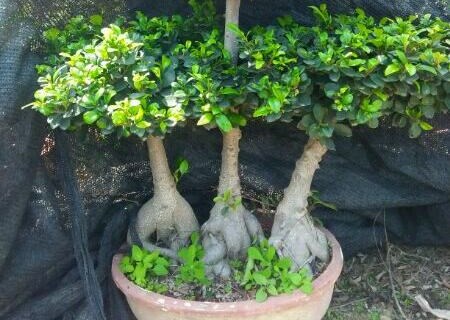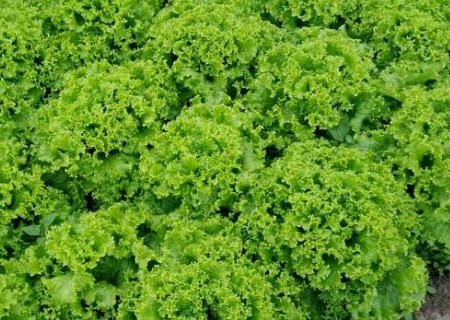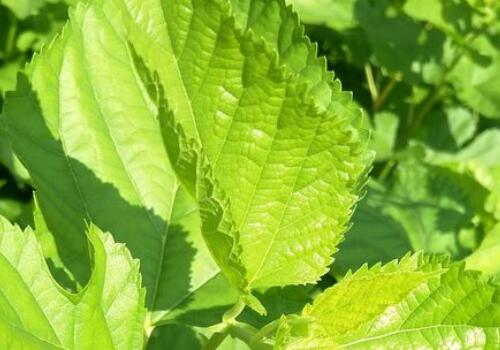How to preserve the bonsai of small leaf banyan (also known as Yarong)? How to trim the shape? How to control diseases and insect pests?
Small-leaf banyan belongs to trees, is an important landscape plant, dense greening, beautiful tree shape, at the same time, small-leaf banyan bonsai is also very popular in the market, deeply loved by people. So do you know how to maintain the small leaf banyan bonsai? How to trim the shape? How to control diseases and insect pests?

First, how to preserve the bonsai of small leaf banyan
1. Watering
Small banyan bonsai as long as the pot soil over the root on the line, covered with a layer of green moss or ornaments to shade, watering depends on the basin soil dry and wet, keep the basin soil moist, too much watering may lead to root blackening and necrosis.
2. Fertilization
The small banyan tree likes big water and big fertilizer, can endure drought, sufficient fertilizer and water can make the branches thicker and grow faster, increase the pruning times and shorten the true culture period.
3. Lighting
The bonsai of the small banyan tree should be placed in a ventilated and transparent place, and the air is too dry, which will affect the growth of the plant, cause the branches and leaves to become yellow and dry, and cause the plant to become weak, resulting in diseases and insect pests.
4. Pruning
Small banyan bonsai should not be blindly pruned, it should be allowed to sprout first, the first year should not be pruned, pruning should not be too much, it will affect the growth of the whole plant.
5. Turn the basin
Because of the rapid growth, the basin should be turned once a year in spring. The potted plant should not be large, otherwise it will easily lead to excessive growth of branches and leaves. Like acid soil, if the culture soil is alkaline, the leaves will be yellowed. The matrix can be prepared with rotten leaf soil, peat soil, loess, perlite or coarse sand and other materials.
2. How to trim the small leaf banyan
1. How often do banyan bonsai be trimmed
The pruning of the banyan tree, more vividly said to be styling, should be pruned mainly, supplemented by binding, and it is best to prune once a year.
The germination ability of banyan tree is strengthened, and pruning can be carried out all the year round, but it is generally the best in early spring. Cut off forked branches, overlapping branches, dead branches and diseased branches that do not need fertilizer.
At ordinary times, the long branches can be cut off at any time to ensure the beauty of the tree. For the vigorous growth of branches, can be cut once or twice a year, repeated, less than 4 years, beautiful banyan bonsai appeared.
2. Pruning methods of banyan bonsai
① heart-picking: this is a way to restrain the growth and height of banyan trees, promote the flat growth of lateral buds, and cut off the tender branches.
② pick buds: banyan bonsai in the growth process, the branches will grow a lot of adventitious buds, at any time to pick buds, so as not to sprout too many branches, affecting the beauty.
③ picking leaves: the viewing period of banyan trees is often the germination period of new leaves. Proper pruning of new leaves will help to sprout new leaves many times, and the color of leaves will be bright and pleasing to the eye, so as to improve the ornamental effect.
④ pruning: bonsai banyan trees often grow a lot of new branches. The method of pruning is based on the shape of the tree and its own aesthetic. If you think the growth of this branch hinders the overall shape, you can cut it off.
⑤ root pruning: pruning the root in time when turning the basin. If the root system is too long or too dense, it should be trimmed. If the root system is not covered with the bottom of the basin, you can choose the original basin and do not need root pruning; if the root system is already full, it is necessary to change the larger basin, cut the dense roots, remove the old roots, retain a few new roots, and replant them.
Third, how to control diseases and insect pests of small leaf banyan
1. Control of leaf blight
Leaf blight is mainly harmful to leaves, so that the leaf tip, leaf edge or part of the initial chlorosis, and then form a light brown disease spot, the edge has a light brown ring, and the boundary between disease and health is clear. The disease is caused by Alternaria alternata. At the initial stage of the disease, 70% mancozeb wettable powder 500 times solution or 40% chlorothalonil suspension 500 times solution, 50% methyl thiophanate suspension 800 times solution, 50% carbendazim wettable powder 600 times solution.
2. Planthopper control
Small-leaf banyan planthopper is the main pest of small-leaf banyan, which harms new shoots and leaves, especially from April to September. It will cause the branches of the banyan tree to dry up, the leaves will fall off, and the leaves will shrink or even fall off, which will hinder the growth of the trees and affect the ornamental value. The excrement of fig planthopper is also easy to induce soot disease. The branches with serious insect pests can be pruned and white can be applied to control the transfer of banyan planthopper between banyan trees. Chemicals such as Dakang EC, imidacloprid wettable powder and omethoate EC can also be used for control.
Time: 2019-03-17 Click:
- Prev

What are the seed planting methods of potted lettuce? How do you make it delicious and simple? What are the advantages and disadvantages of eating raw?
Lettuce, commonly known as lettuce, can be eaten raw, crisp, tender and refreshing, slightly sweet. In recent years, the cultivated area has expanded rapidly, and more and more people like to plant potted plants at home. So do you know the methods of planting potted lettuce seeds? How do you make it delicious and simple? What are the advantages and disadvantages of eating raw?
- Next

Can mulberry trees be planted in the courtyard at home? How many years do potted seedlings hang fruit? When will it be transplanted and pruned? Sexual breeding prescription of attached mulberry
Mulberry generally refers to mulberry, mulberry is a deciduous tree or shrub, up to 15 meters high. It is cultivated in all provinces and regions from northeast to southwest of China, and from northwest to *. Can mulberry trees be planted in the courtyard at home? How many years do potted seedlings hang fruit? When will it be transplanted and pruned? What are the methods of sexual reproduction of mulberry? Learned from Suqian Seedling Base
Related
- Fuxing push coffee new agricultural production and marketing class: lack of small-scale processing plants
- Jujube rice field leisure farm deep ploughing Yilan for five years to create a space for organic food and play
- Nongyu Farm-A trial of organic papaya for brave women with advanced technology
- Four points for attention in the prevention and control of diseases and insect pests of edible fungi
- How to add nutrient solution to Edible Fungi
- Is there any good way to control edible fungus mites?
- Open Inoculation Technology of Edible Fungi
- Is there any clever way to use fertilizer for edible fungus in winter?
- What agents are used to kill the pathogens of edible fungi in the mushroom shed?
- Rapid drying of Edible Fungi

